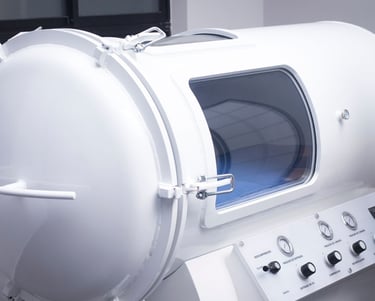2023 February
Hyperbaric Oxygen Therapy in Small Animal Veterinary Medicine:
A Comprehensive Guide for Veterinarians and Veterinary Technicians


This post may have affiliate links. As an Amazon Associate, we earn from qualifying purchases from those links. This does not cost you anything and helps support the Sanctuary and all the animals in our care. This has no bearing on our reviews and comparisons. We will do our best to keep things fair and balanced to assist you in making the best decision for you and your pets.
Hyperbaric Oxygen Therapy (HBOT) has gained increasing popularity in small animal veterinary medicine, and is recognized as a valuable integrative alternative medical treatment option. According to a study published in the Today’s Veterinary Practice journal (https://todaysveterinarypractice.com/integrative-alternative-medicine/hyperbaric-oxygen-therapy-in-veterinary-medicine/), HBOT is a modality that delivers 100% oxygen to the patient within a pressurized chamber, leading to increased oxygenation of tissues and improvement in various medical conditions.
HBOT has a wide range of applications in veterinary medicine, including but not limited to treatment of soft tissue infections, wound healing, and management of various neurological conditions. The increased oxygenation of tissues results in improved cellular function and tissue repair, making HBOT a valuable tool in managing various medical conditions.
While HBOT is usually doctor-driven, it has tremendous potential as a veterinary technician-run treatment modality. With proper training and certification, veterinary technicians can take on a larger role in the administration of HBOT, freeing up veterinarians to focus on other aspects of patient care. Additionally, the provision of HBOT as a treatment option can serve as a significant revenue driver for veterinary hospitals, as demand for this therapy continues to grow among pet owners.
The Textbook of Hyperbaric Medicine (2019) provides a comprehensive overview of the mechanisms and applications of HBOT, including its use in veterinary medicine. The textbook highlights the importance of proper patient selection and monitoring, as well as the need for a thorough understanding of the potential risks and benefits of this therapy.
In conclusion, HBOT is a valuable tool in the management of various medical conditions in small animal veterinary medicine. With its potential to improve patient outcomes and serve as a revenue driver for veterinary hospitals, HBOT is an important consideration for veterinary professionals looking to expand their treatment options.
Hyperbaric Oxygen Therapy in Small Animal Veterinary Medicine
A Comprehensive Guide for Veterinarians and Technicians
